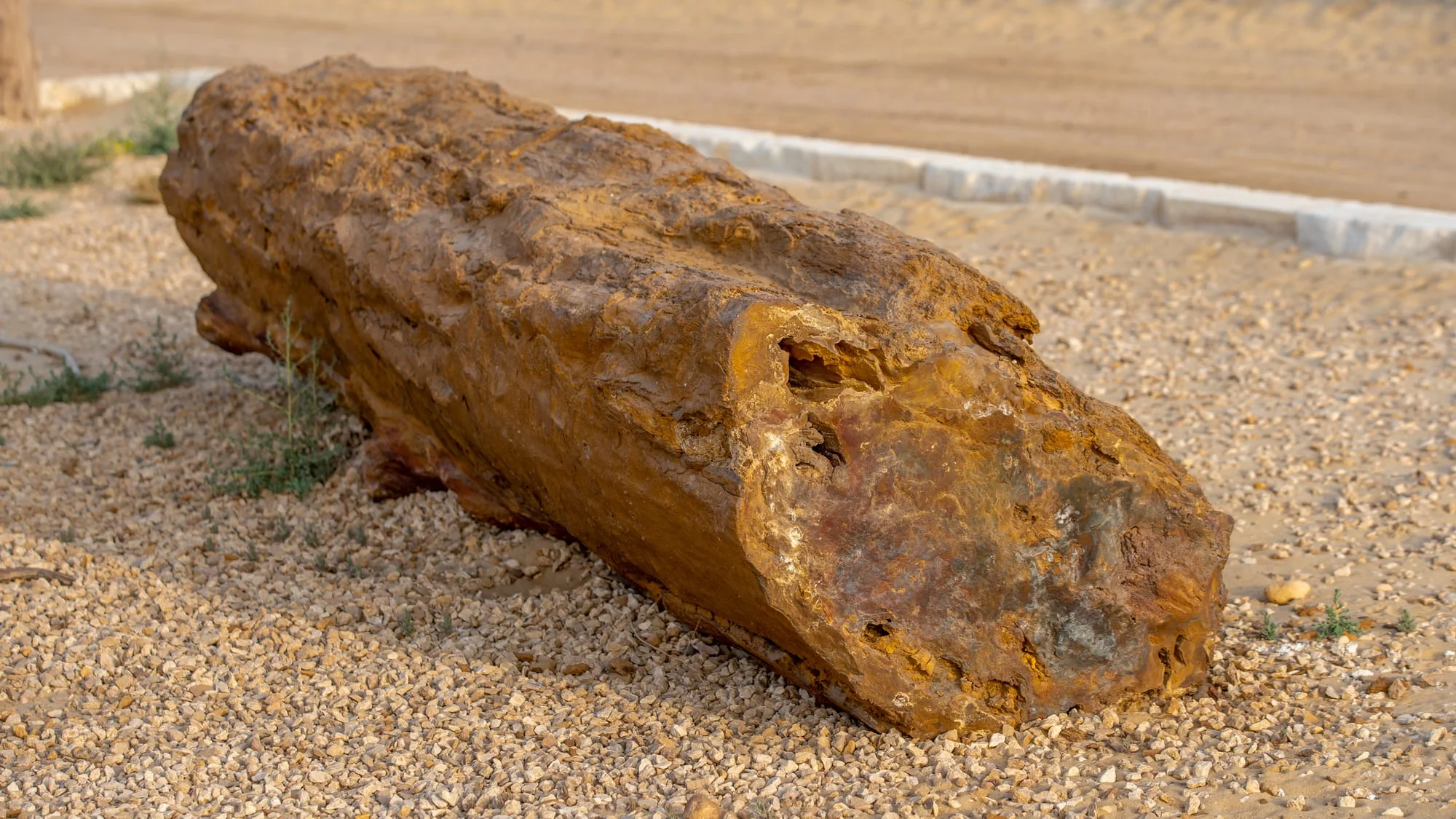city-state of Cairo Governorate, and the metropolis of Egypt. Greater Cairo, which includes the city proper, has a population of 21.9 million and is the 12th-biggest metropolitan region in the world. This makes it not only the largest metropolis in Egypt, but also the largest in Africa, the Arab world, and the Middle East. Cairo is a symbol of old Egypt because it is situated near several important archaeological sites, including the Giza pyramid complex, Memphis, and Heliopolis. Fustat, a town established after the Muslim invasion of Egypt in 640, grew up near the Nile Delta next to an already extant old Roman fortification, Babylon. In 969, the Fatimid empire established a new settlement in the area called al-Qhirah. During the reigns of the Ayyubids and Mamluks, it supplanted Fustat as the city’s primary hub. (12th–16th centuries). Cairo, known as “the city of a thousand minarets” due to its abundance of Islamic building, has long served as a governmental and cultural hub for the Middle East. In 1979, the ancient district of Cairo was designated as a UNESCO World Heritage Site.
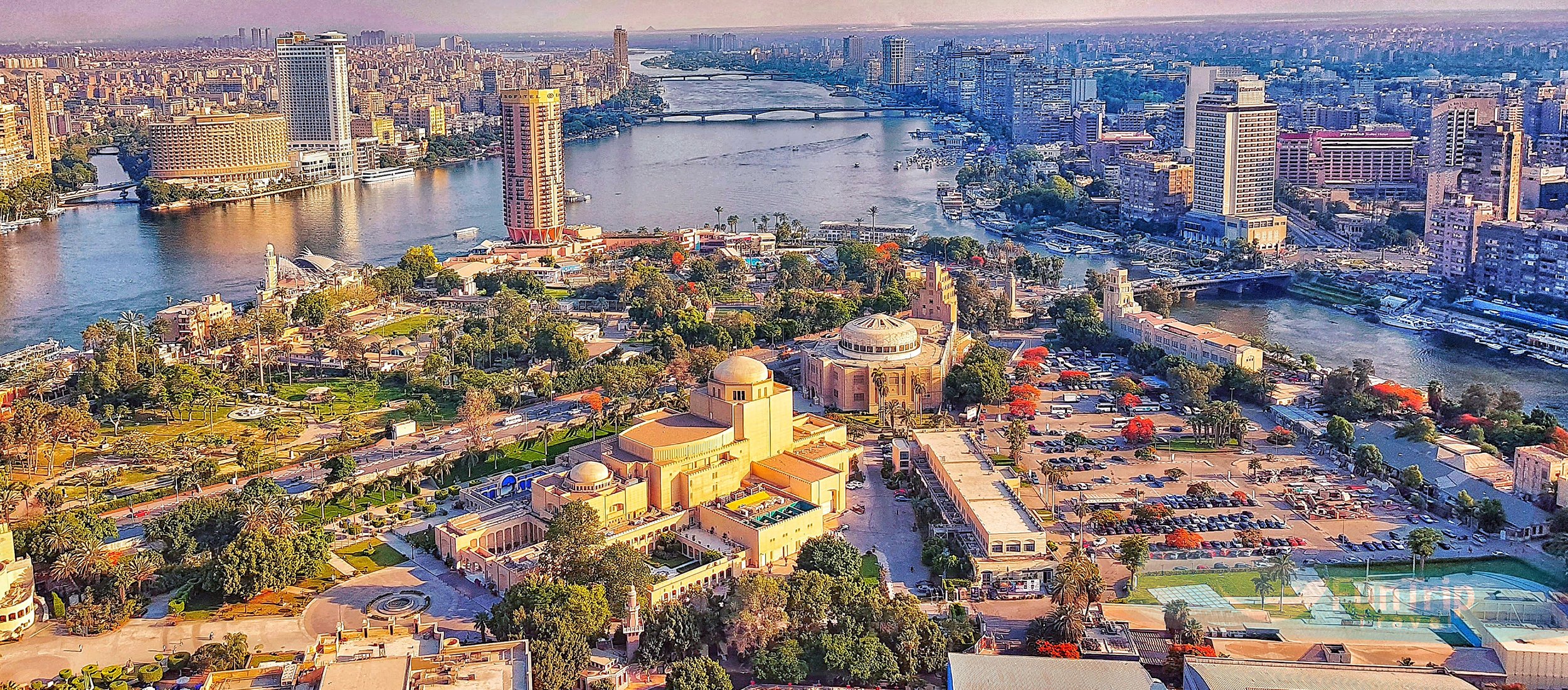
EXPLORE. CONNECT. CREATE MEMORIES
The Egyptian Museum
Next to Midan Tahrir, the heart of Cairo, is the Egyptian Museum, the world’s earliest historical museum and home to the biggest collection of Pharaonic artifacts. The museum’s extensive collection spans from the Predynastic to the Roman periods. The French builder Marcel Dourgnon was selected as the winner of the first-ever worldwide challenge to select a designer for a major structure in 1895. The museum, which was established by Khedive Abbas Helmy II in 1902, is now a famous icon in the heart of Cairo, holding some of the world’s most impressive historical artifacts. The Narmer Palette, which commemorates the union of Upper and Lower Egypt under one monarch, as well as the full graves of Yuya and Thuya, Psusennes I and the riches of Tanis, are among the priceless items in the museum. The museum also features life-size sculptures of the famous monarchs Khufu, Khafre, and Menkaure, who are credited with the construction of the pyramids on the Giza plateau. Papyri, sarcophagi, and jewels round out the exceptionally big collection housed in this museum.
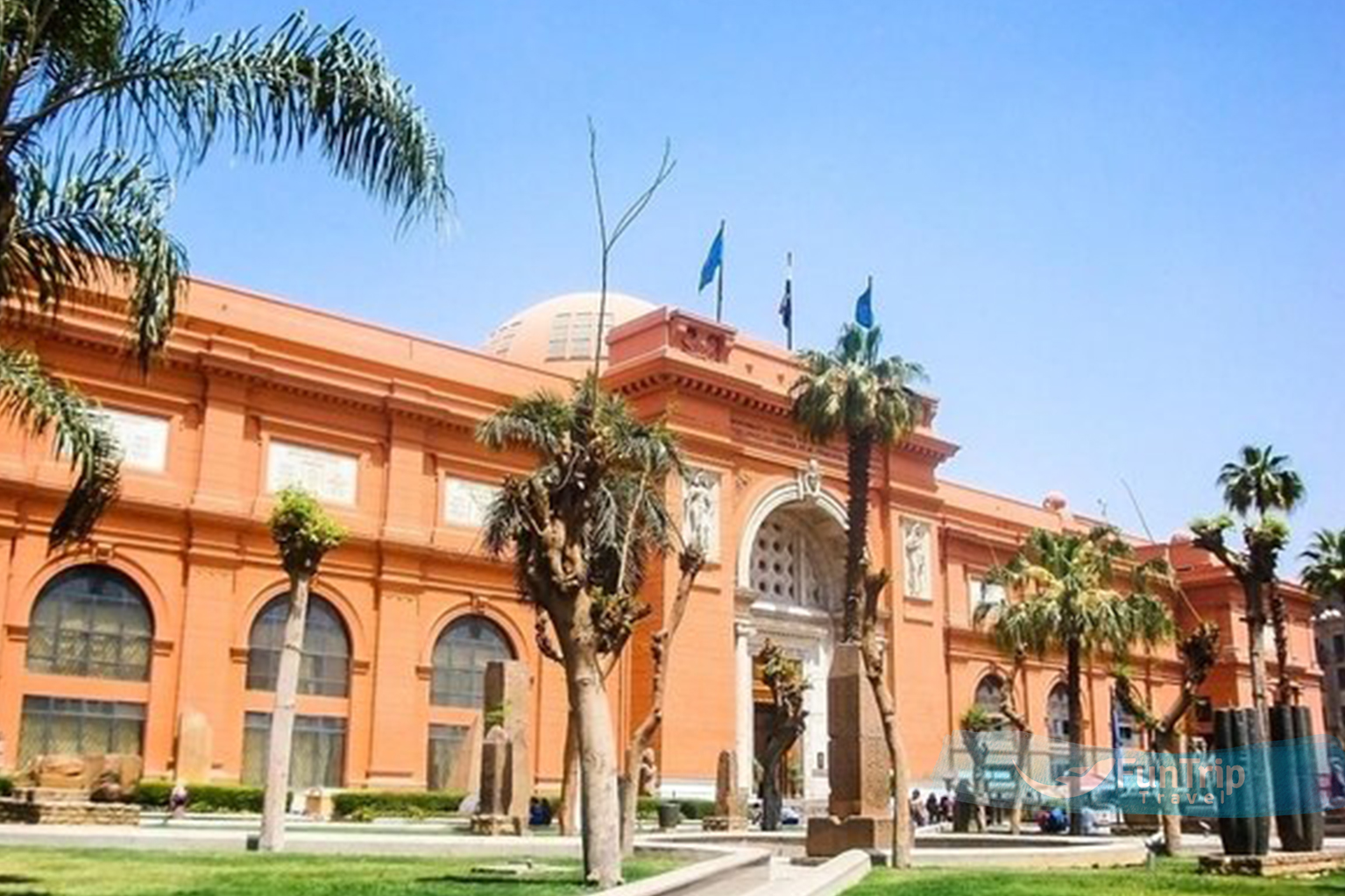
Al-Azhar Mosque
Located in the heart of medieval Cairo, Al-Azhar Mosque is the finest building of the Fatimid era and one of the city’s earliest surviving mosques, dating back to the 10th century AD.Al-Azhar is also one of the world’s oldest universities, and it is still the Islamic world’s leading theological center.
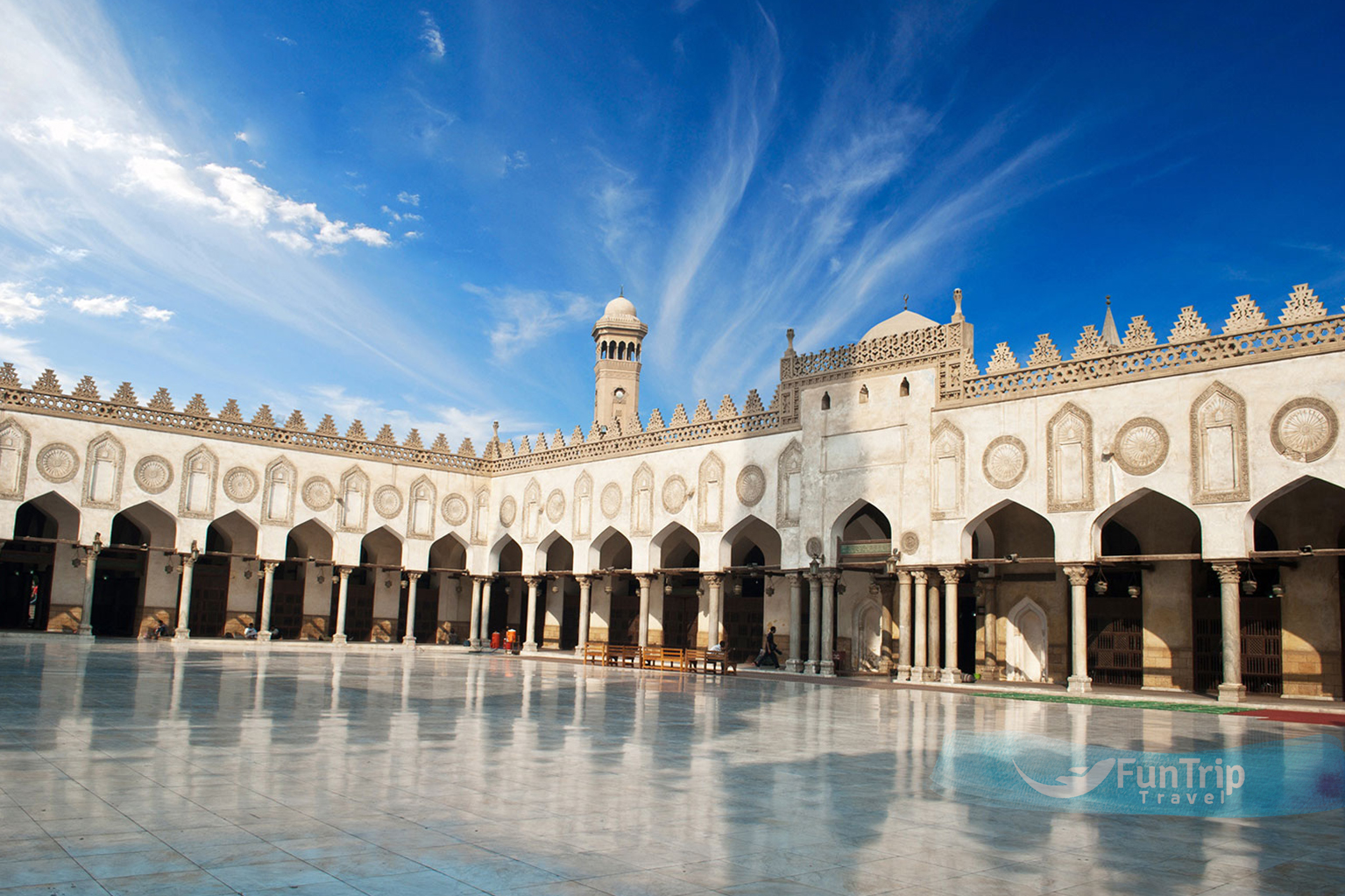
Coptic Cairo
This small church-filled cluster of winding laneways is located within the walls of Old Babylon, where the Roman Emperor Trajan built the first fortress along the Nile. The Roman towers are still visible from the main street. The Coptic Museum here houses one of Egypt’s finest collections of Coptic art and contains a wealth of information on Egypt’s early Christian period. The 9th-century Hanging Church next door contains some stunning examples of Coptic architecture. The church, which was founded in the fourth century, was originally built over the Roman gate towers
(hence the name) and was substantially rebuilt during the ninth century. The real highlight of a visit to this district for many Christian travellers, however, is the Church of St. Sergius and Bacchus, where local legend says the Virgin Mary, baby Jesus, and family hid during King Herod’s massacre of male babies. Further into the quarter, you will find the Ben Ezra Synagogue, which is said to be built near the location where the baby Moses was discovered in the reeds. You can also visit the Amr Ibn al-As Mosque, Egypt’s first mosque, just outside the quarter.
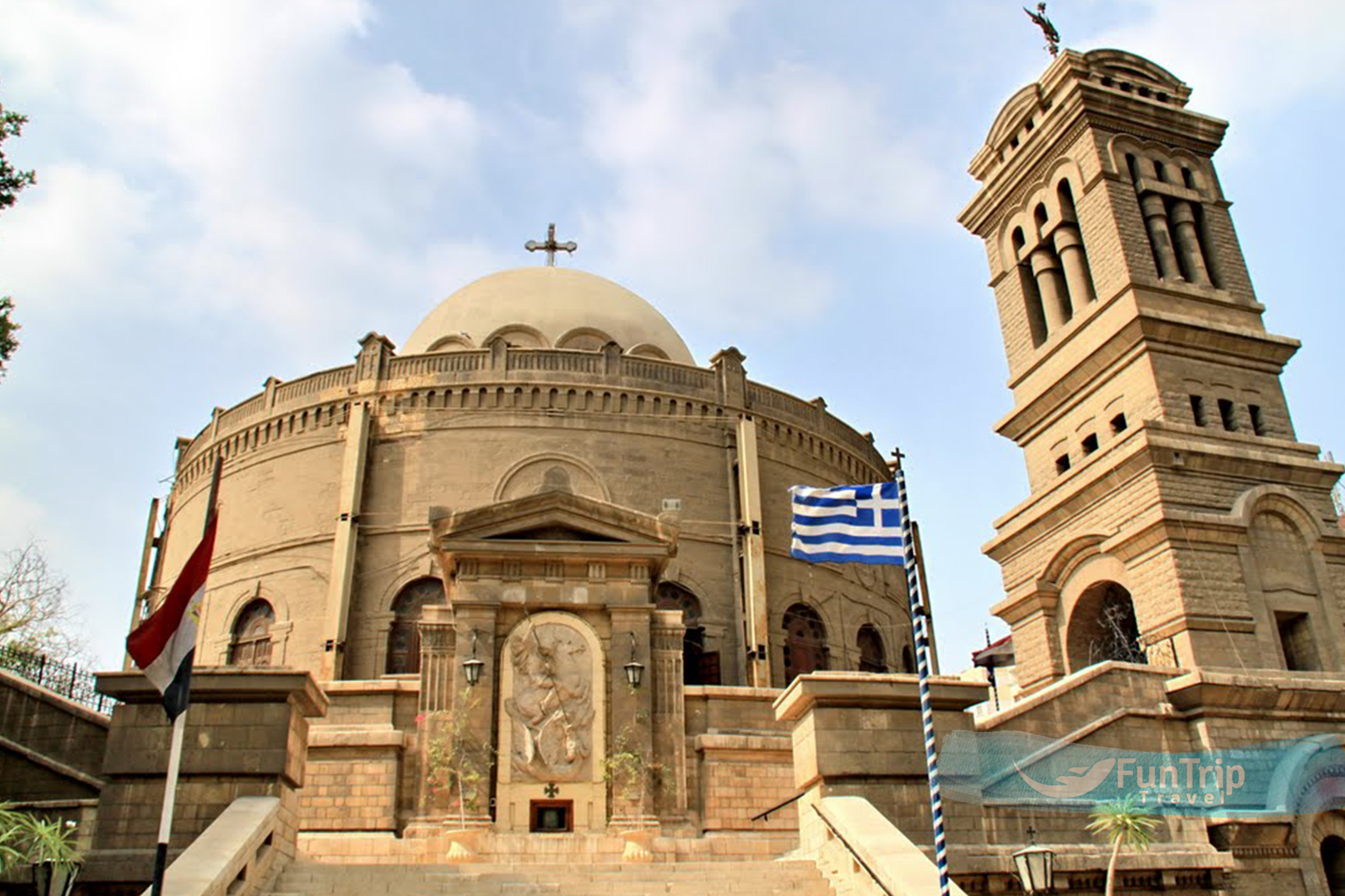
The mosque of ‘Amr Ibn Al-Aas
is the earliest mosque still standing in both Egypt and Africa. Amr ibn al-As, a general, was an early follower of Muhammad. In 20 AH/640 AD, he overtook Egypt and founded Fustat, the first Islamic city of what is now Egypt. Caliph ‘Umar ibn al-Khattab tasked him with establishing the first structure in the new capital city, the Mosque of ‘Amr ibn al-‘As, a year later. The shrine became a hub for Muslims and ‘Amr’s forces, then a small group in Egypt, in the years following the invasion. The Prophet’s friends al-Zubayr ibn al-‘Awam and Ubada ibn al-Samit worked together to construct the building. There were many structural alterations made to the building over the years, and today only fragments of the original building survive. The present-day mosque in Old Cairo was rebuilt in the twentieth century.

The National Museum of Egyptian Civilizations (NMEC)
Unlike many of Cairo’s other major museums, which all focus on a single era, it is dedicated to telling Egypt’s entire human history under one roof. Although the museum’s collection is far from complete, this is the place to go to see Egypt’s most famous Pharaonic mummies. Ramses II and III, Hatshepsut, Amenhotep I, and Seti I and II are just a few of the well-known names among the 22 mummies on display in the Royal Mummies Gallery. The NMEC is located in Fustat and can easily be combined with a visit to Old Cairo (Coptic Cairo).
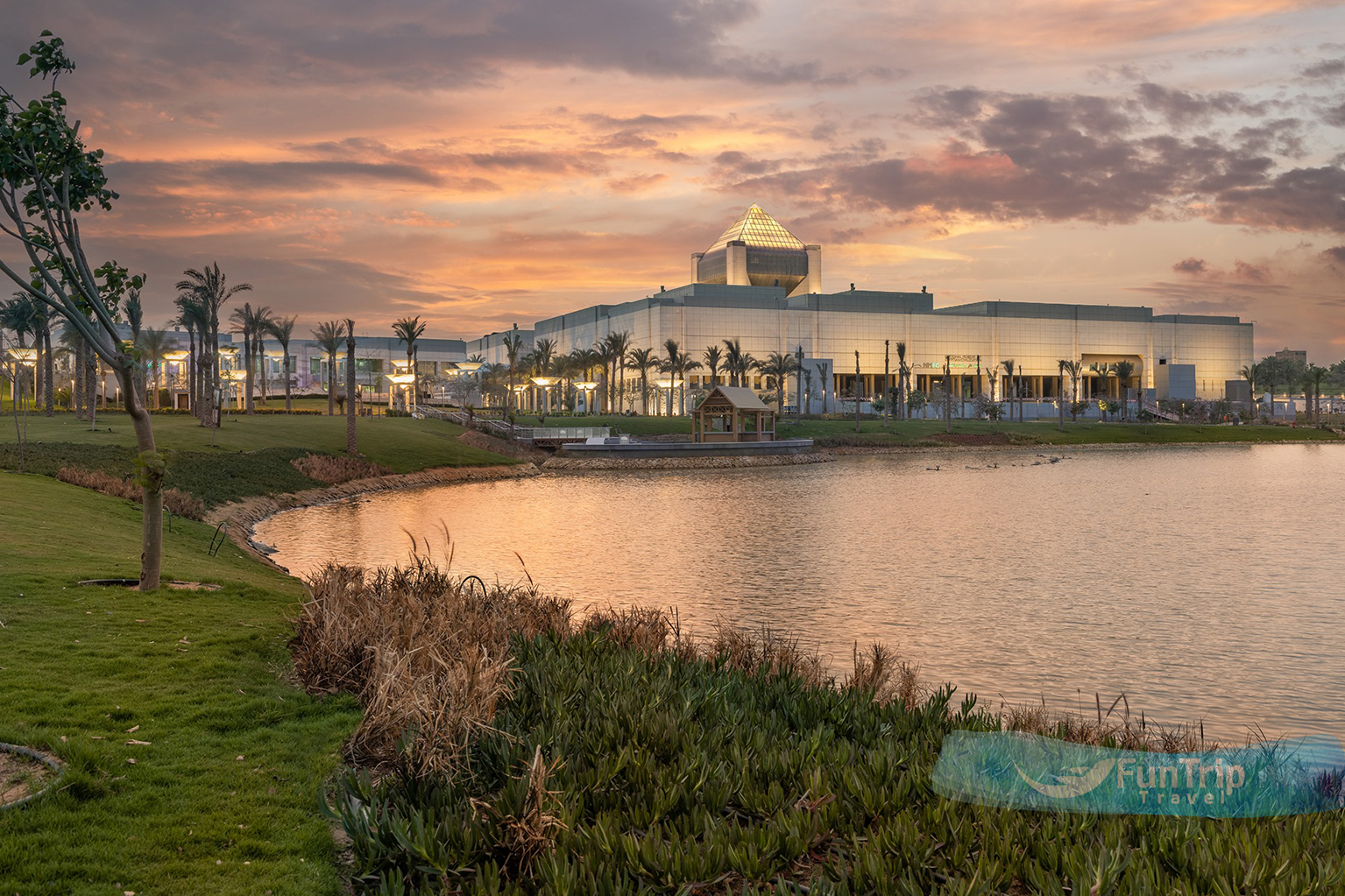
Khan el-Khalili
gives its customers one of the finest purchasing encounters anywhere. Established as a marketplace in 1400 C.E., this souq (bazaar) is a labyrinth of narrow streets that still reverberates with the clatter of metal workers and silversmiths.The main streets have long been completely taken over by the tourist trade (with plenty of cheap papyrus pictures and plastic pyramids on display), but divert off the main drag into the surrounding alleyways, and the tiny stores and cluttered workshops are some of the best places to visit for traditional Egyptian products.You can find anything from locally made fabrics to relics and beautiful brass light covers. Tourists and local shopkeepers alike can expect lightning-fast service at the fishawy coffee store, where delicious Arabic coffee and tea are offered in plastic cups. The majority of the souq’s customers congregate on Al-Muski Street. (called Gawhar al-Qaid Street at its eastern end). The spice market can be found just to the south of the junction with Al-Muizz Li-Din Allah Street, while the gold and silver factories can be found to the north.On its eastern side, the market is surrounded by the Sayyidna el-Husein Mosque, which was constructed in 1792 to commemorate the Prophet Muhammad’s cousin.
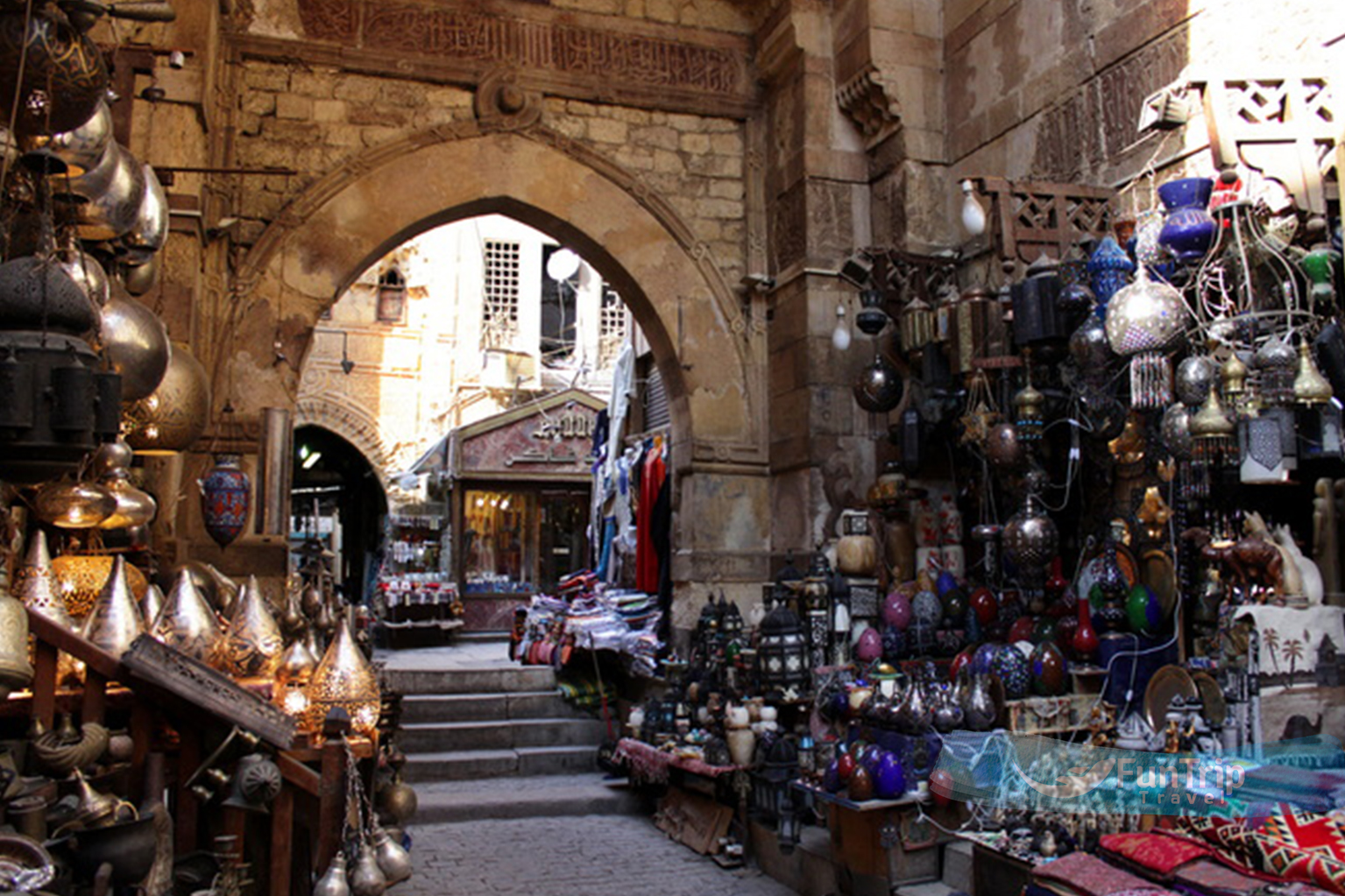
The Citadel
Saladin built Cairo’s citadel in 1176 in a commanding location at the foot of the Mokattam Hills. Except for the eastern outer walls, the original structure he designed has long vanished, but a legacy of rulers has made their own additions here. The most famous monument and the main reason for visiting is the Muhammad Ali Mosque. The “Alabaster Mosque,” with its white stone and tall, disproportionately slender minarets, is one of Cairo’s most iconic structures. The views of the city are another major reason to come up here; head to the Gawhara Terrace for the best view in town. The El-Nasir Mosque, built by Mohammed el-Nasir between 1318 and 1335, is located just to the northeast of the Muhammad Ali Mosque. A collection of half-hearted museums (the Police Museum, National Military Museum, and Carriage Museum) occupy some of the other buildings on site and are more interesting to see for the architecture than the exhibits. If you’re feeling energetic, you can walk to the citadel area from Bab Zuweila by following Khayyamiyya Street. The walk takes approximately 30 minutes.
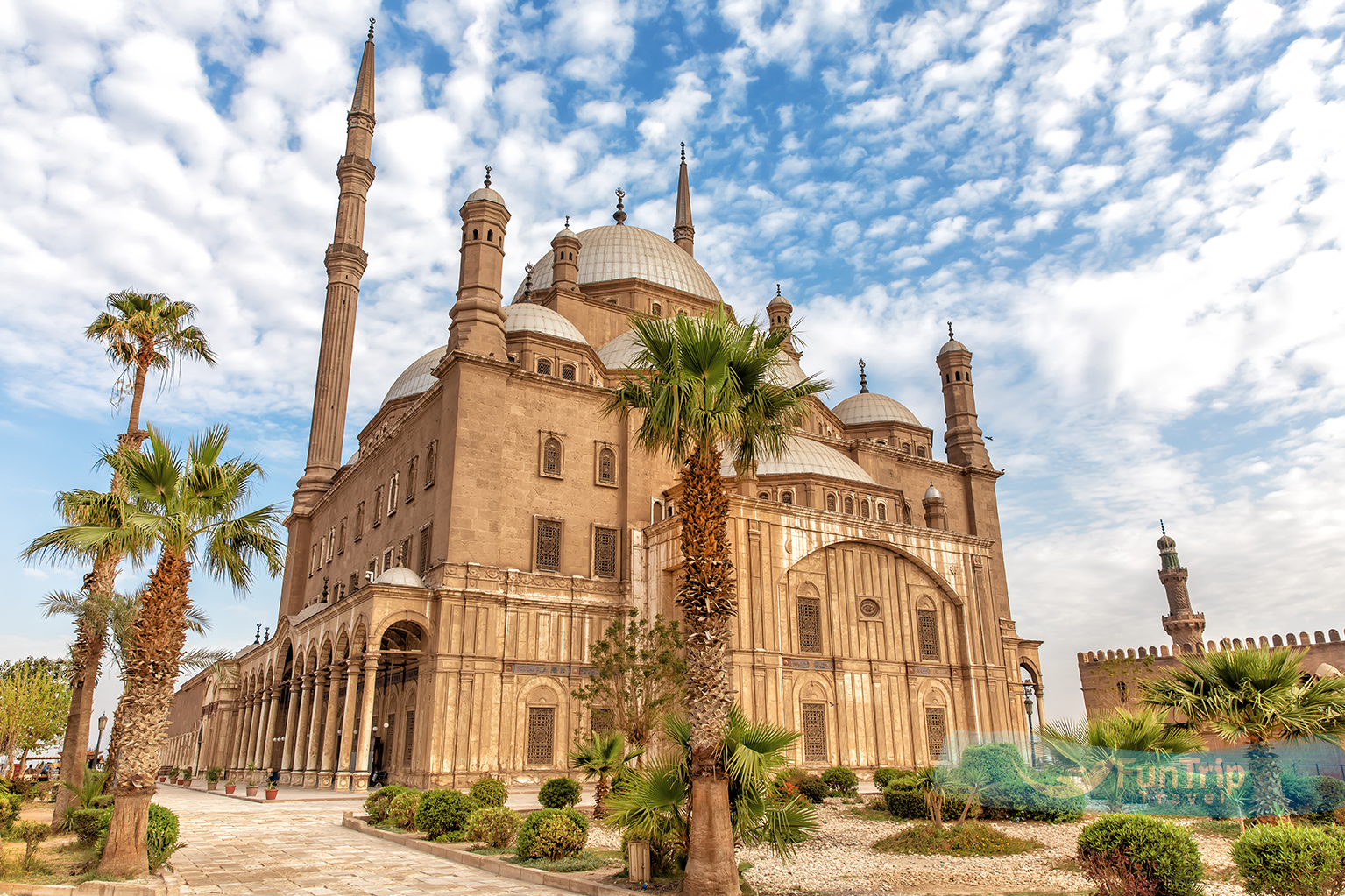
Sultan Hassan Mosque
It is a stunning example of Mamluk building, with a wealth of stalactite carving and elaborate arabesque features that make it a masterpiece of Islamic art.Between 1356 and 1363, it was built by order of Sultan Hassan el-Nasir.Large primary entryway in the north is nearly 26 meters high, and the tower in the south is 81.5 meters high, making it the highest in Cairo.The entrance leads into a tiny antechamber with a vaulted ceiling and a hallway that ends in an elaborate open court with a pond used for ritual cleansing.Here, through an iron entrance, you can enter the sultan’s tomb, where you can see the stalactitic pendentives of the original roof. The plain casket housing the sultan’s remains stands at the heart of the room.It was in 1912 that the El-Rifai Mosque, which confronts the Sultan Hassan Mosque, was constructed to hold the remains of Khedive Ismail.Also interred here is Mohammed Reza Pahlavi (1919–1980), the last Shah of Iran.These two churches share a conspicuous spot on Midan Salah ad-Din, just below the Citadel of Cairo.
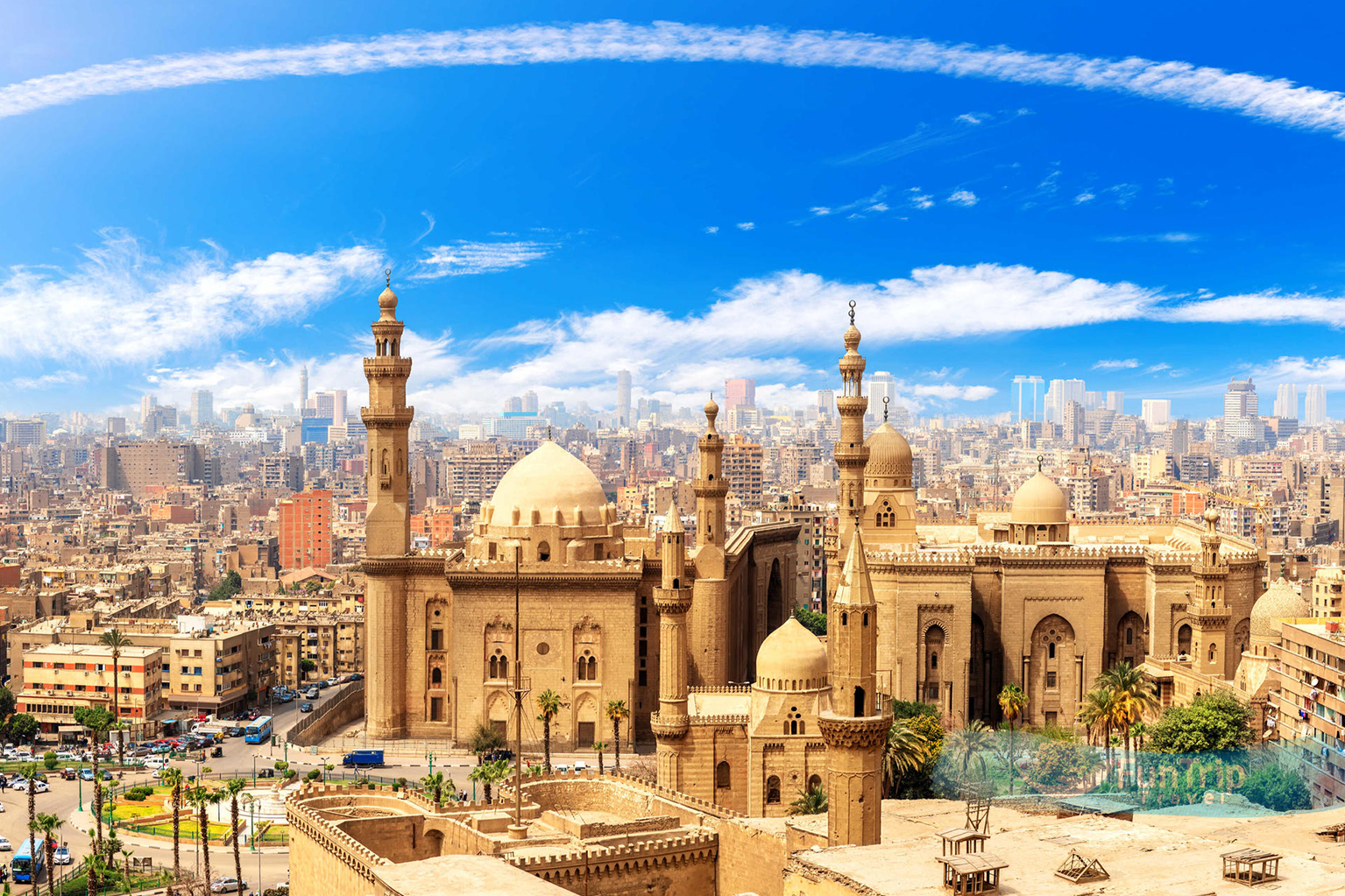
Islamic Art Museum
One of the world’s most significant groups of art from the Middle East is found in Cairo’s Museum of Islamic Art. Ottoman tiles, Ayyubid pottery, murals, finely patterned wood carving, coins, sculpted marble tombstones, and jewel-toned rugs are just some of the items on exhibit. Check out the displays of elaborately painted pottery, glasses, and metalwork, and spend some time reading illuminated Qurans. Then, take in the intricate astrolabes and other scientific instruments in the chambers dedicated to astronomy and other disciplines. To come here is to delve into the rich history of Islam. The museum’s convenient location near the entrance to the Historic Cairo neighborhood makes it a good choice for either the beginning or conclusion of a trip to the region. You can get to Bab Zuweila very quickly on foot.Bab Zuweila is the most interesting of the Historic Cairo district’s gates. Climb to the top of this mediaeval relic (built in the 11th century) for panoramic views of the entire neighbourhood.The gate itself have two minarets and are the last remaining southern gate of the old town. The red-and-white stonework of the Sheikh al-Mu’ayyad Mosque is right next door, and a few steps away are the intriguing artisan stalls of the Street of the Tent Makers, where Egypt’s bright fabric used for weddings and other special occasions is sold in bulk.
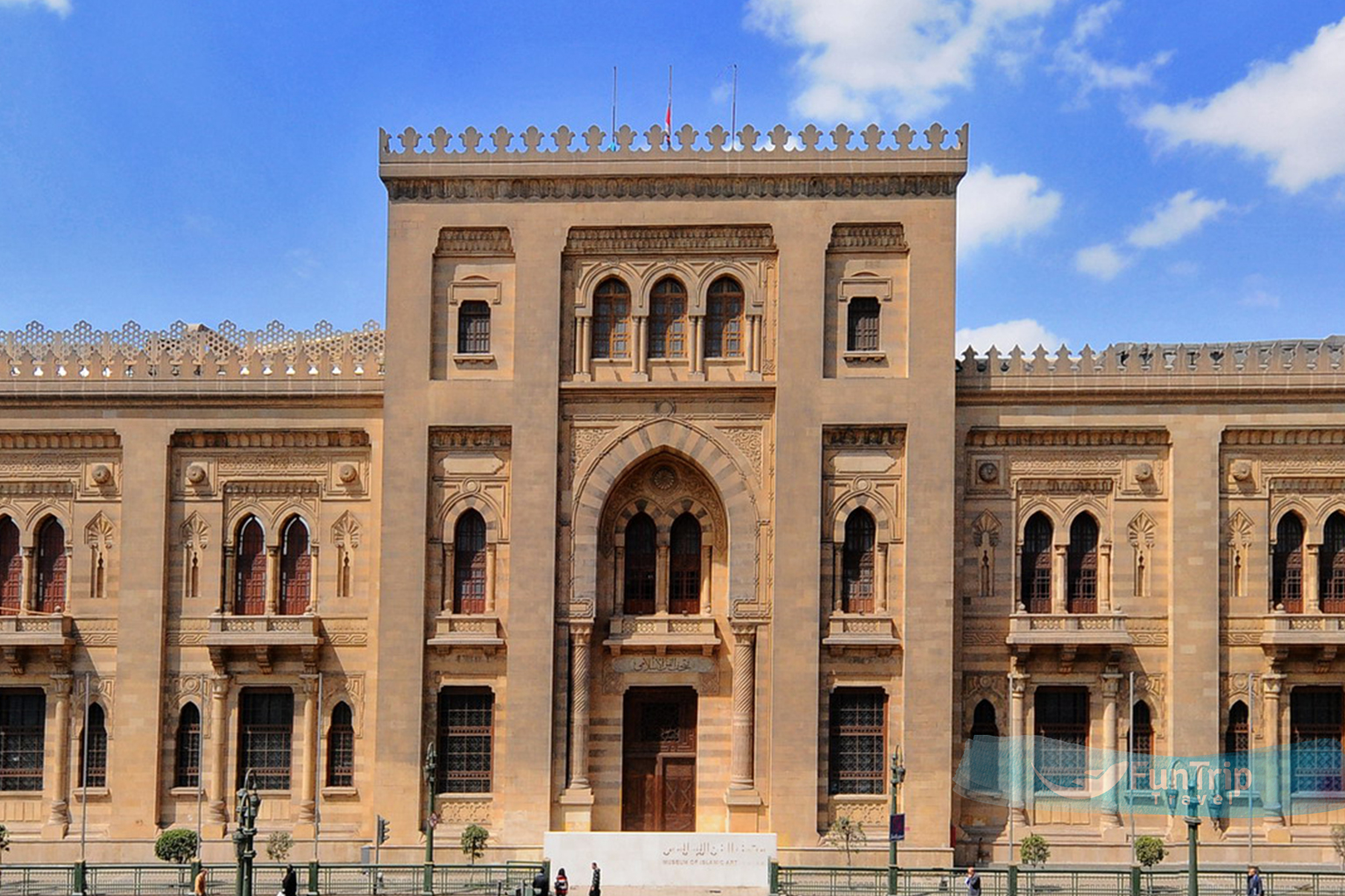
Al-Muizz li-Din Allah Street
Al-Muizz li-Din Allah Street’s northern terminus is encircled by stunning, carefully repaired Mamluk architecture. The Madrassa of as-Salih Ayyub, constructed in 1247, exemplifies the serene minimalism of Islamic design. The beautiful madrassa of Qalaun can be found directly across the street from the madrassa, and it is widely considered to be one of the finest building achievements of the Mamluk era. Intricate ceramic work, exquisite stone, mother-of-pearl inlays, and stained-glass windows adorn this building that Qalaun’s son Muhammad al-Nasir completed in 1293. Qalaun’s madrassa doubled as an infirmary when it first opened. The magnificent Egyptian Textile Museum has a collection that covers the Pharaonic era all the way up to the Islamic period, and is located a short distance north of the newer (constructed in 1309) Madrassa of an-Nasr Mohammed, which also features plenty of elaborate decoration. Al-Muizz li-Din Allah Street is located in the Old Cairo neighborhood.

The Ibn Tulun Mosque,
The Abbasid ruler of Egypt, Ahmed Ibn Tulun, commissioned the construction of Cairo’s second-oldest mosque in the years 876 and 879 CE. Back when it was constructed, it held the record for biggest mosque anywhere in the globe. Many elaborate frieze pieces have been preserved, and the main court’s colonnades lead to a number of rooms with limited entrances. Fragments of the original plaster and wood decoration can be seen in the primary worship hall (located on the court’s southern side), and the gold tile ornamentation in the mihrab has also survived.Located on the northern side of the mosque, the 40-meter-tall tower is characterized by a beautiful semicircular structure above the entryway and a winding stairway inside. Its design was inspired by the towers of the Great Mosque of Samarra on the banks of the Tigris.Spectacular vistas of the Mokattam Hills to the east and the multitude of homes to the north await you at the top of the 173 stairs leading up to its terrace.The distance between the Sultan Hassan and Ibn Tulun Mosques, both located on Al-Saliba Street, is quite small.
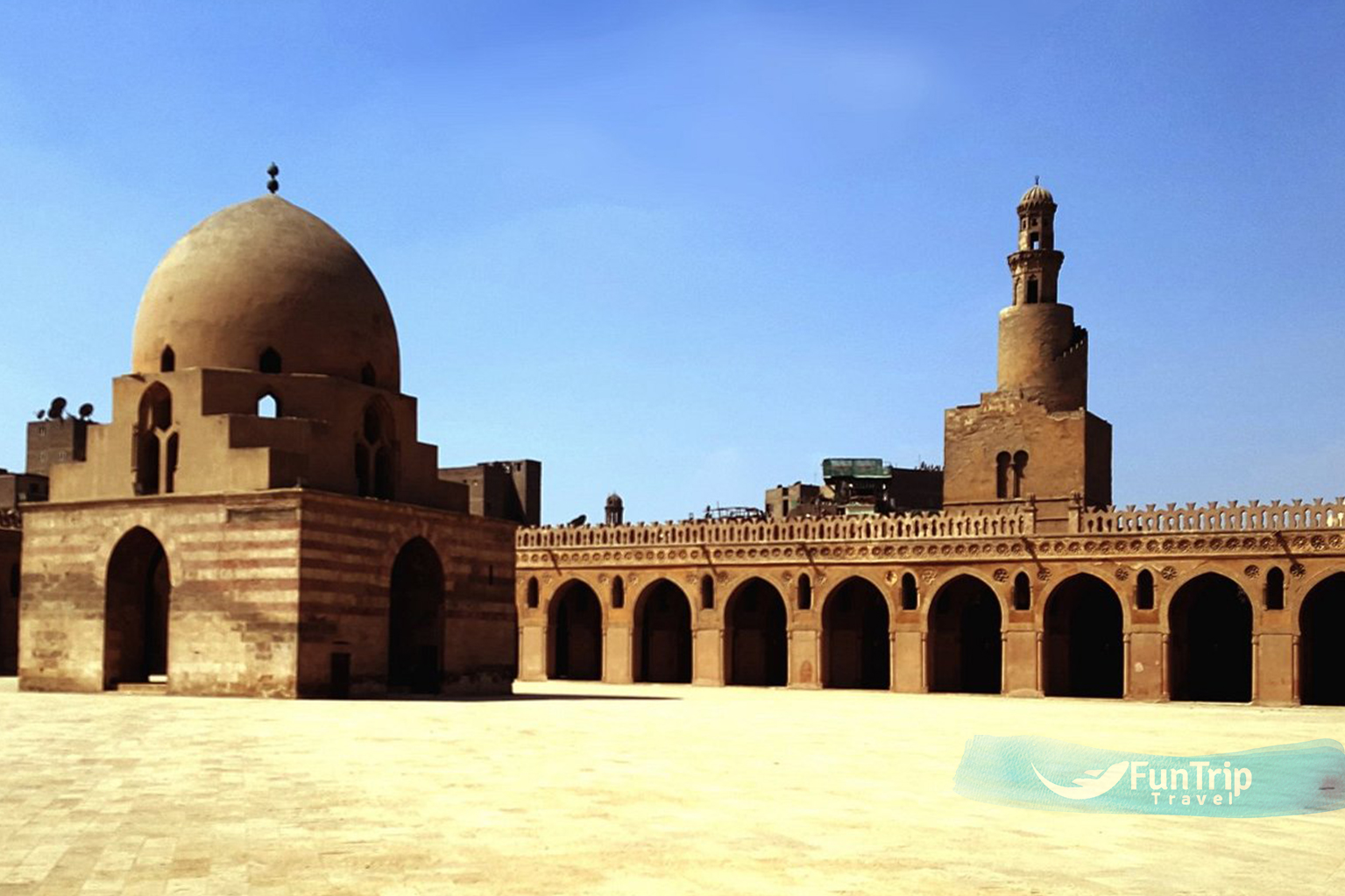
Al-Azhar Park,
The verdant lung of the Historic Cairo neighborhood, it was constructed over what was basically a medieval trash landfill. Its doors first opened in 2005. At dusk, the vistas over the entire old city from within the palace’s groomed grounds are nothing short of breathtaking. After a day of touring, guests can unwind at one of the hotel’s two eateries. However, if you are already in the Historic Cairo area and the weather is pleasant, you can stroll to the lower park entry from Bab Zuweila by heading east onto Darb al-Ahmar Street.
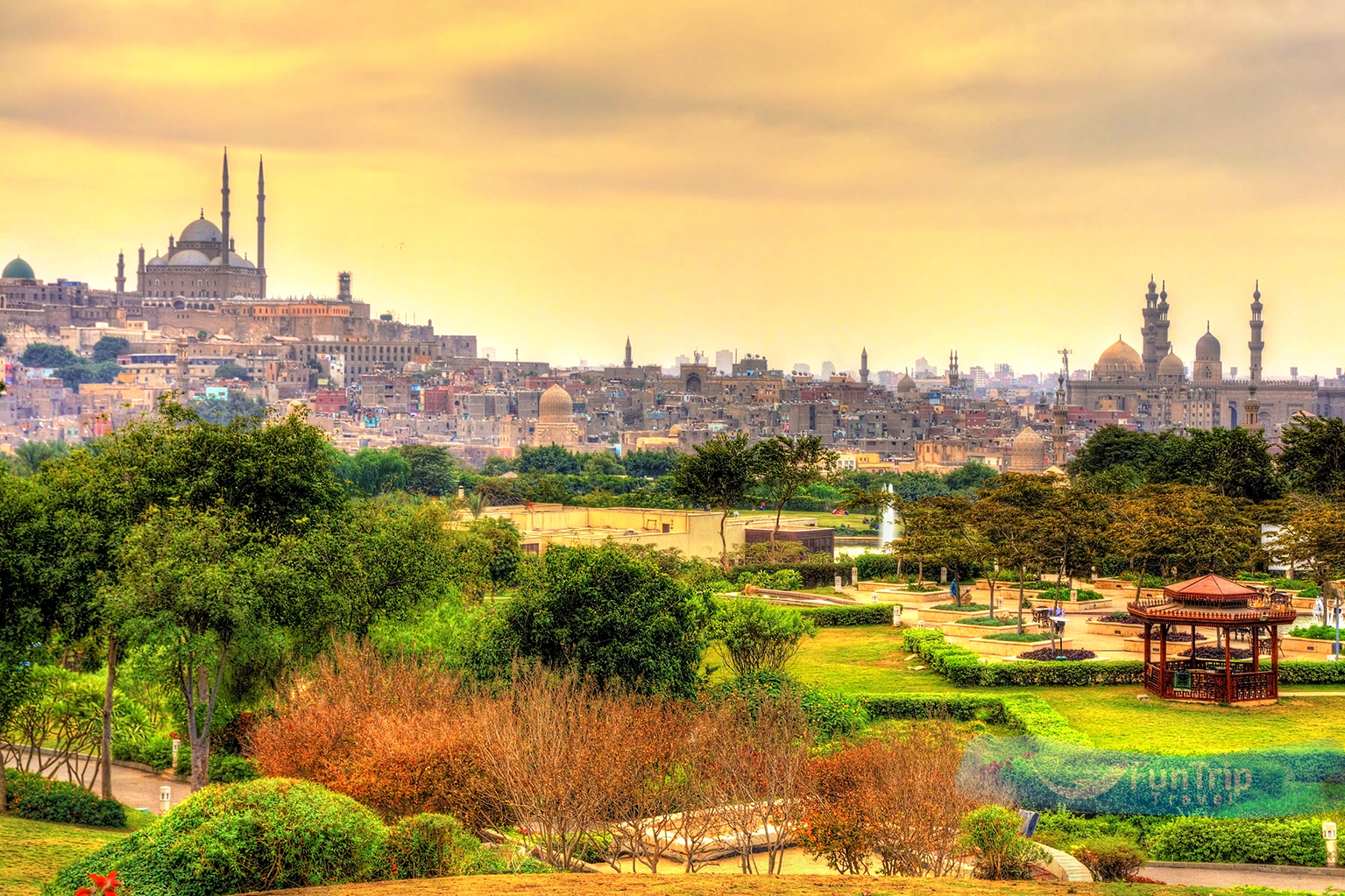
The district of Zamalek
Nile island Gezira is home to Zamalek and most of Cairo’s trendy shops and eateries. Wide boulevards lined with trees and gorgeously opulent Belle Époque houses give the entire region a decidedly European vibe, going back to the middle of the nineteenth century. (many of which are now home to various embassies). Zamalek is not only home to some of Cairo’s finest eateries but also a thriving art scene. On the Gezira Fair Grounds can be found the Museum of Modern Egyptian Art, which contains a wonderful selection of 20th century Egyptian art, including pieces by Mahmoud Said and Mahmoud Mukhtar. A modest selection of the work of the renowned Egyptian artist can be seen at the newly restored Mahmoud Mukhtar Museum, which is conveniently situated close to the Cairo Opera House. The Aisha Fahmy Palace in Zamalek is open to the public on the 26th of July, and it is well worth a visit even if you aren’t especially interested in art. The rococo furnishings of this house, built in 1907 and painstakingly restored to their former grandeur, are just as much of a draw as the changing art shows it now holds. The Cairo Tower, which President Nasser had constructed in 1961 and which stands at a lofty 187 meters, can be seen from miles away thanks to its location above the surrounding vegetation. If you want to see twilight fall over the city, a visit to the viewing platform at that time is a must.
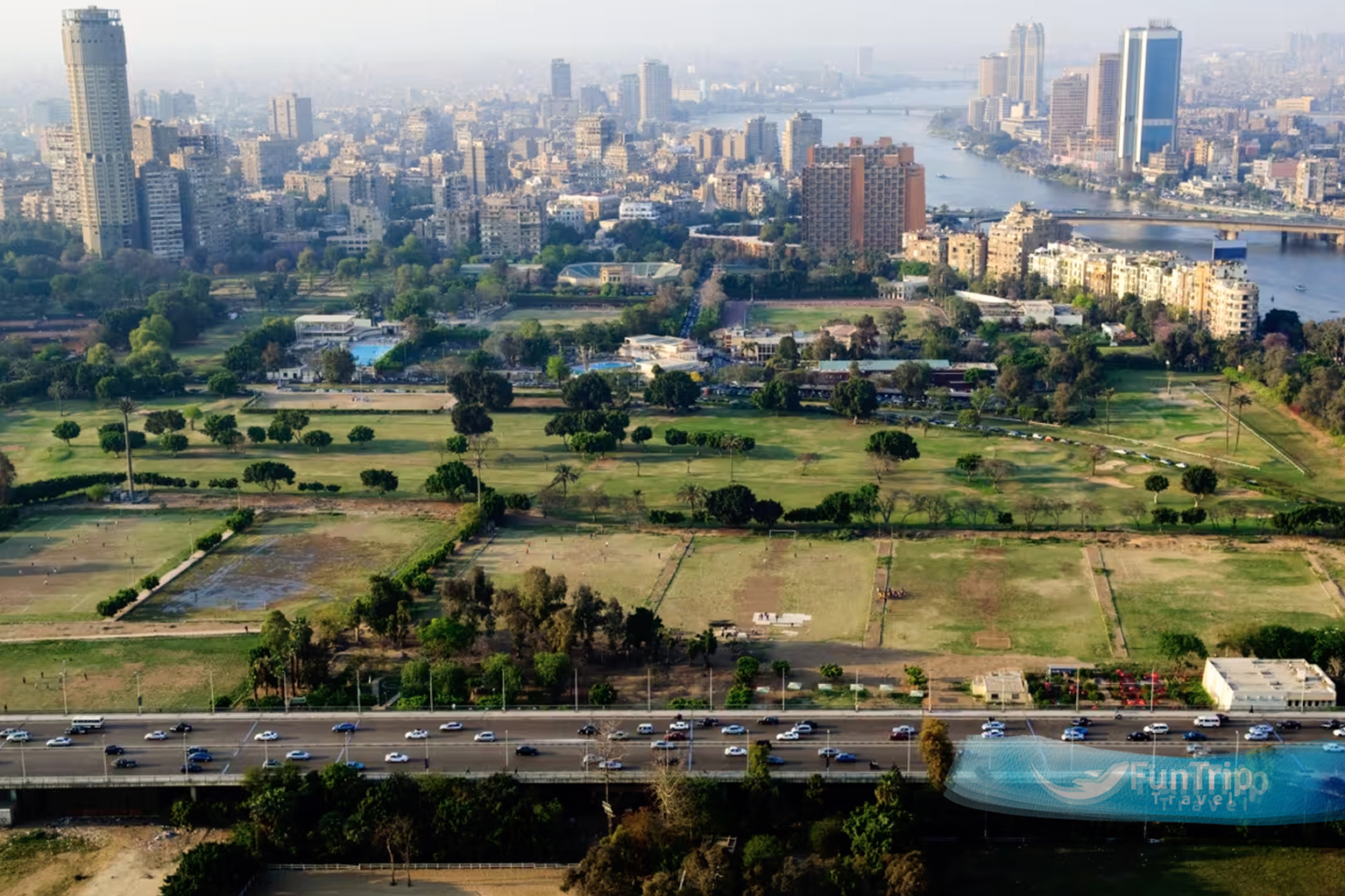
Cairo’s Last Nilometer
Located just south of Gezira Island, the beautiful Monasterly Palace was once the home of an Ottoman pasha. To gauge the height of the yearly floods on the Nile, the Egyptians used the Nilometer, which was situated in the royal grounds on the southern point of the island in Cairo. This nilometer, in contrast to those in Upper Egypt (like the one still standing on Elephantine Island in Aswan), was constructed in the year 861 CE. In addition to the palace itself, the gardens of the palace are home to the Umm Kalthum Museum, which is dedicated to the story of Egypt’s most well-known queen. You can hear the music of Umm Kalthum (1898–1975), the most popular singer in the Arab world, booming out onto the street from the stereos of virtually every taxi in Egypt. The exhibit inside features memorabilia from the singer’s life and career, such as her glamorous embroidered stage outfits and an informative black-and-white documentary (with English subtitles). The alleyways of Roda Island are interesting to wander away from the castle, and you can still see some early 20th-century house buildings that have fallen into disrepair.
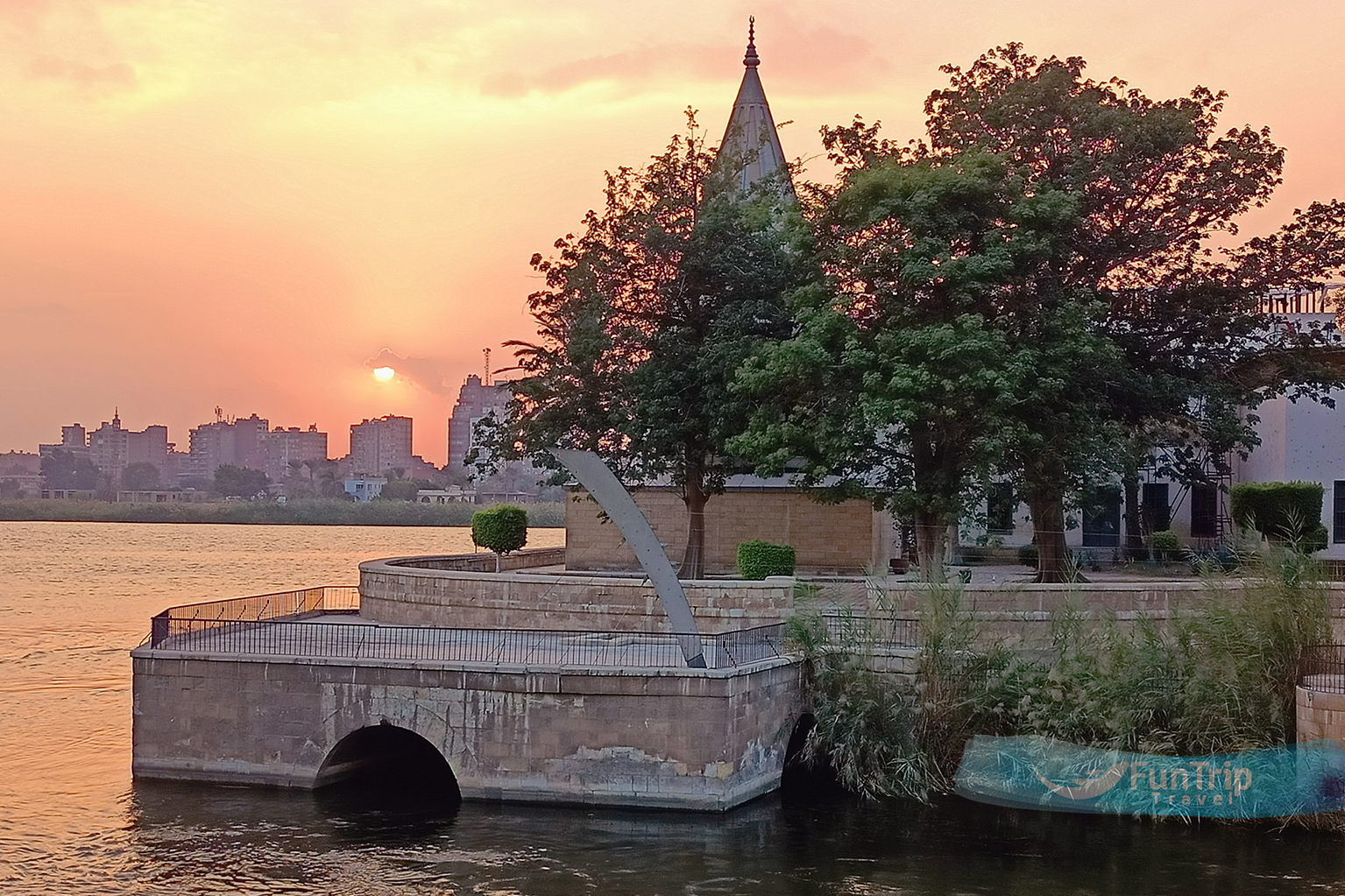
Manyal Palace
You can find the majestic Manyal Palace at the top of Roda Island. After years of maintenance and repair, it is now accessible to the public again. Interiors in these structures are a lavish medley of styles, with influences ranging from traditional Arabic architecture to opulent European palaces. The Reception Palace, where visitors were entertained, features Rococo details, Ottoman-style mosaic work, and oil paintings on its ornate timber ceilings. The golden throne palace is the main attraction. King Farouk’s relative constructed the structure in the early twentieth century. The grounds surrounding the building are beautiful.
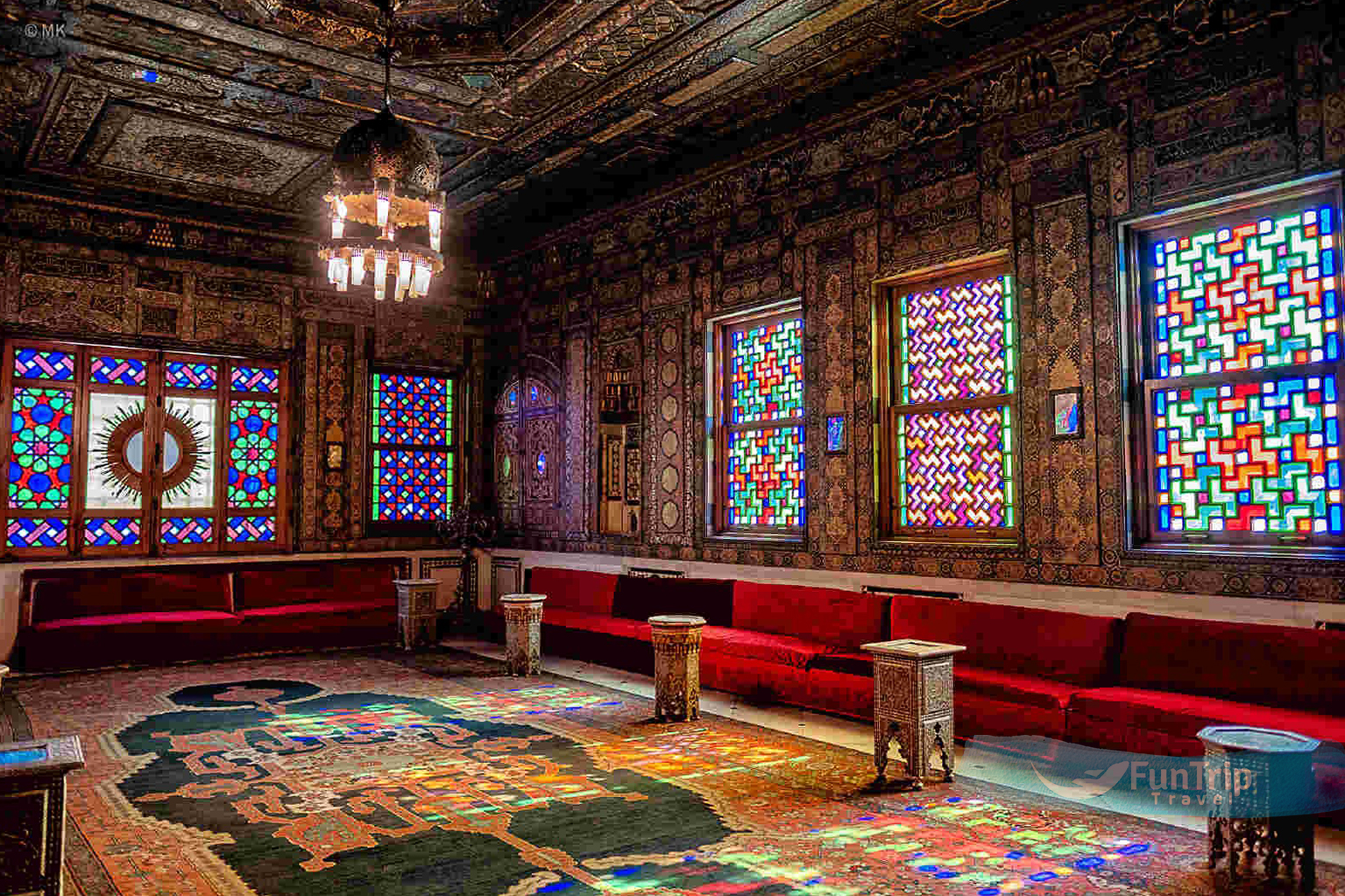
Khalifa Al-Hakim
Is one of Egypt’s most fascinating rulers. This Fatimid ruler was known for his terrifying rule over the land, which included frequent murders of his royal household staff, nightly patrols of his city’s streets, and riding a donkey incognito to ensure his subjects were behaving themselves. His mosque, completed in 1013 CE, has served as a madrassa, Crusader fortress, and psychiatric hospital over the centuries and was completely restored in the 1980s. The minarets are the most interesting architectural features here. They were originally round, but their current square casing and domed top sections (reminiscent of an Arab incense burner) date from their rebuilding following the 1303 earthquake in Cairo. The mosque is located between two of the most important gates in the historic district. Both Bab el-Futuh (Gate of Conquests) on the mosque’s western side and Bab el-Nasr (Gate of Victory) on the mosque’s eastern side were built in 1087 and are modeled after ancient Roman town gates. You can walk from Al-Azhar Mosque to Al-Hakim Mosque by following Al-Mu’izz li-Din Allah Street all the way north.
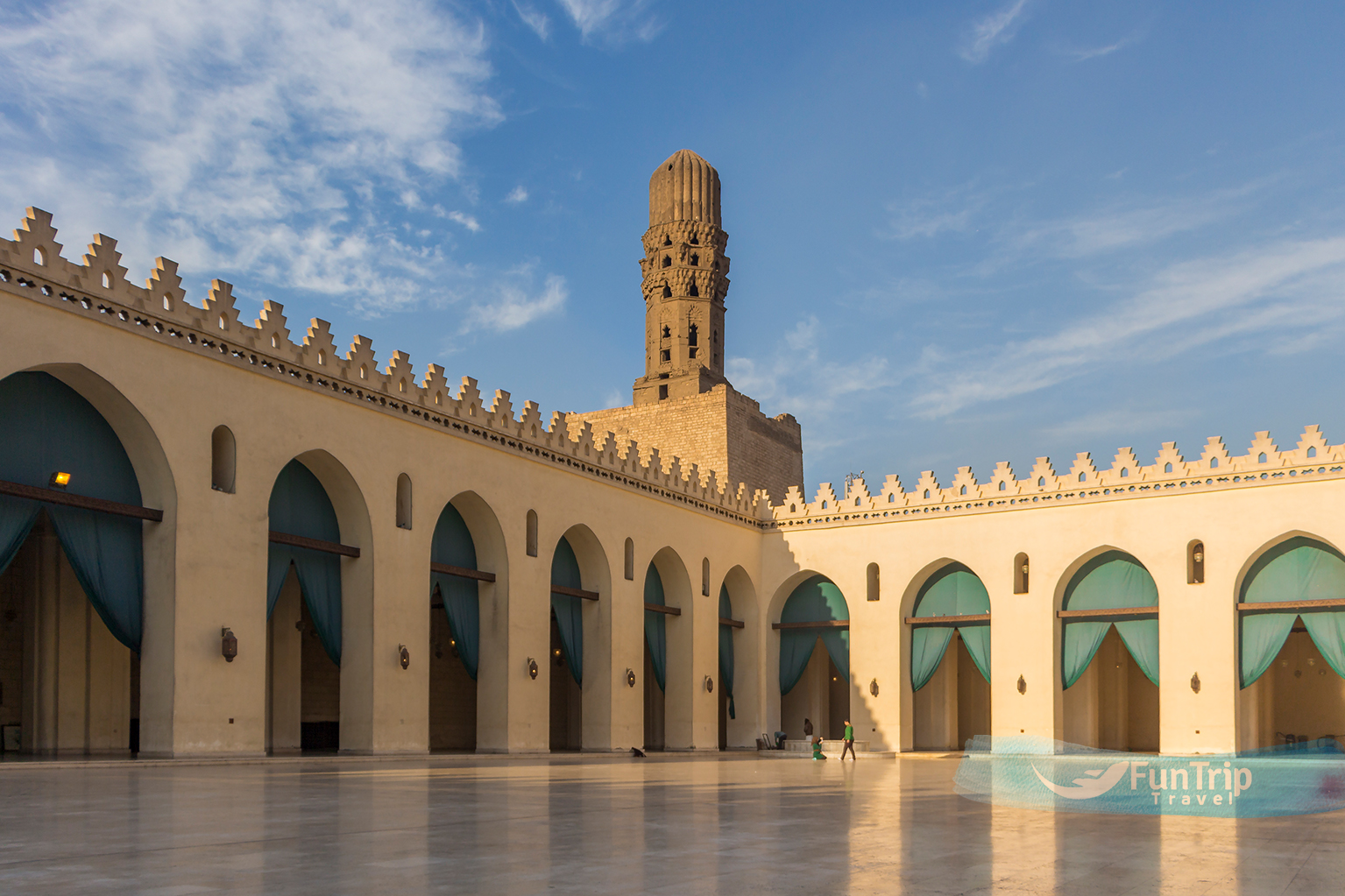
Cairo’s downtown
You can get a feel for Cairo in the late eighteenth century, when it was known as the “Paris of the East,” by walking through the central area and focusing on the darkened by vehicle emissions buildings rather than the street level. The neighborhood is full of Belle Époque structures that were once breathtaking in their opulence but are now falling apart. Many of the best structures from this period can be found in and around Midan Talaat Harb, and they have all been given a recent facelift. On Al-Gumhuriya Street, at the western border of Downtown, stands the Abdin Palace, a building from the 19th century. The old royal quarters have been turned into a museum where visitors can view a unique collection of artwork, textiles, and presents presented to Egyptian leaders over the years.
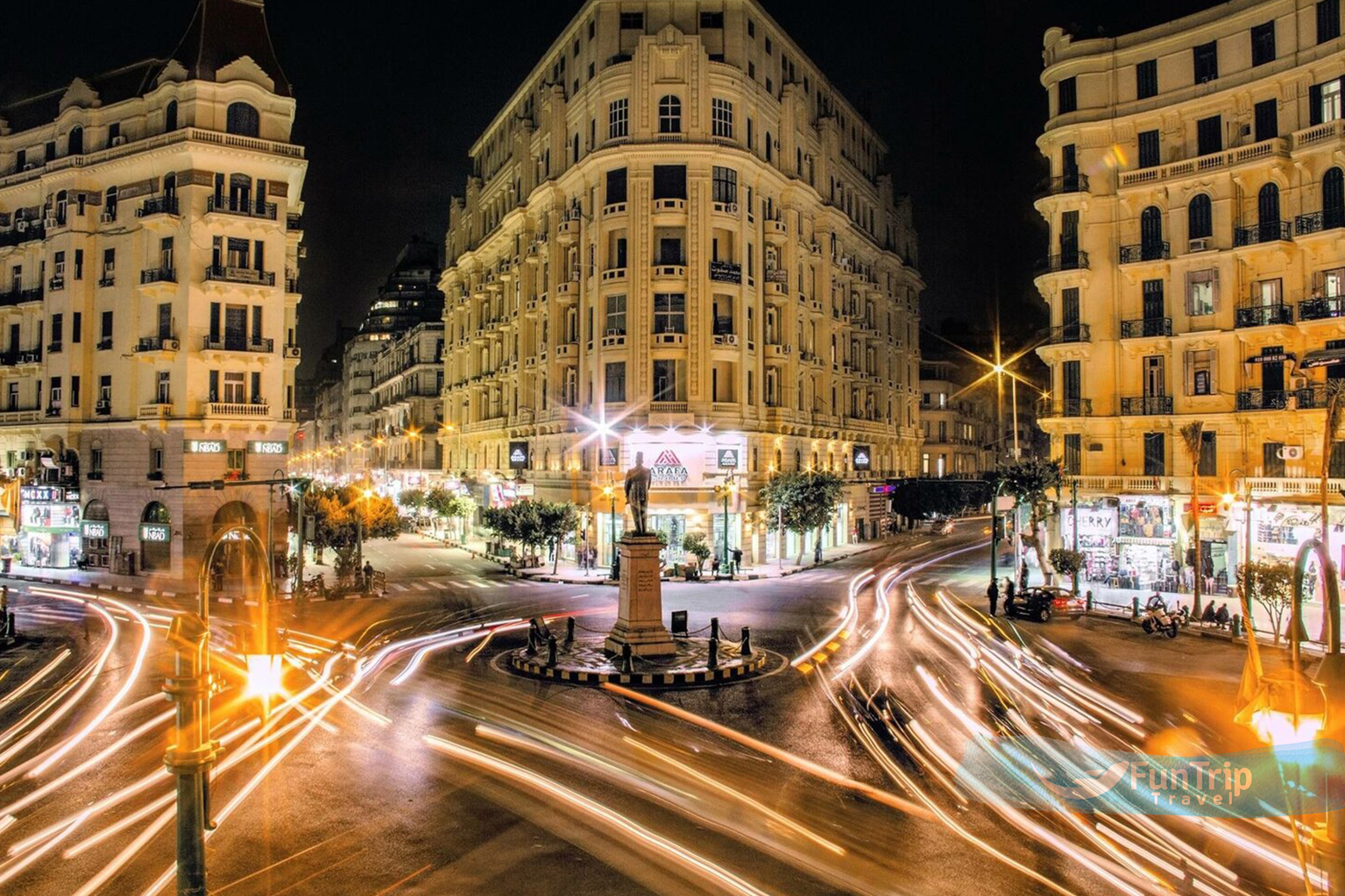
Ancient Heliopolis and El-Matariya
Ancient Heliopolis was the Egyptian settlement of Yuno (known as Heliopolis in the Greek era), one of Egypt’s earliest towns and, from the Old Kingdom on, the country’s cultural capital. It is not to be mistaken with the Cairo neighborhood of the same name. This site is best suited for the most committed of armchair explorers, as only a handful of building foundations and a few walls remain. Much of Cairo’s stonework was recycled from earlier buildings. A crimson Aswan stone monolith, 20 meters in height, is all that is left of the sanctuary. Five kilometers to the east of the monument is the Necropolis of Heliopolis, which contains tombs dating back to the Middle and New Kingdoms. Middle Kingdom graves were distinguished by the abundance of weaponry found among the deceased.
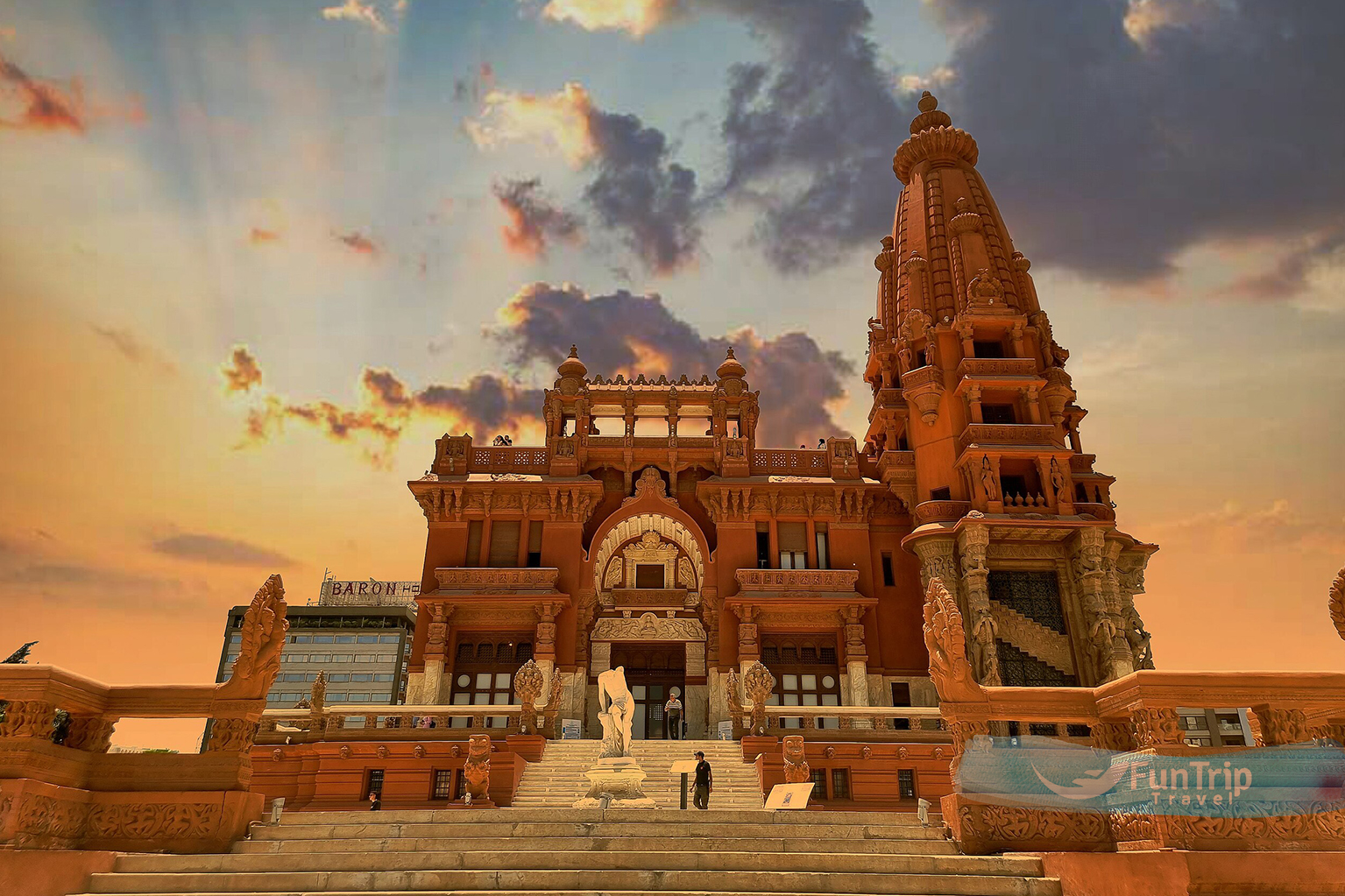
El-Matariya Church, The so-called Virgin’s Tree is located approximately 13 kilometers northeast of downtown Cairo. There’s a local tradition that says Mary and Jesus relaxed under this sycamore tree before making their way to Egypt. The original tree burned down in 1672, so this one was put in its place. The tree is located in a tiny yard that receives its water supply from a stream said to have been made by the baby Jesus. In contrast to the other streams in the region, this one yields potable, pure water. The ancient Egyptians held a tree in Heliopolis sacred because it was there that Isis was said to have breastfed a young Horus. This tree is associated with the tale of the Virgin’s tree.

El Sakkakini Palace
In Old Cairo, Egypt, you’ll find a gem of Italian architecture. It was constructed in the year 1897 AD, and it is distinguished by its unusual architectural style, which is an amalgamation of various regional and global trends. This Italian structure is a prime example of rococo design, a style associated with the upper and middle classes. It was in the lovely Al-Zaher neighborhood of Cairo that Habib Pasha Al-Sakkakini built his mansion; from there, eight routes of note converge. The Sakkakini Palace is an example of a design that fuses elements of the Islamic architectural tradition with those of the Italian, Roman, and Greek architectural traditions. There are several one-of-a-kind sculptures and a marble monument of a young woman named “Dora the Crown” included. The round cupola of the summer living room can be seen from the lift in the castle, which looks out over the terrace. There’s also a rose garden and tree grove in its center. The palace has a magnificent marble pond spread across two stories, as well as sculptures of two lions, a nude girl, and children, and roofs in the styles of the Byzantine and the Middle Ages. At the palace’s front is a marble sculpture supported by a marble foundation.
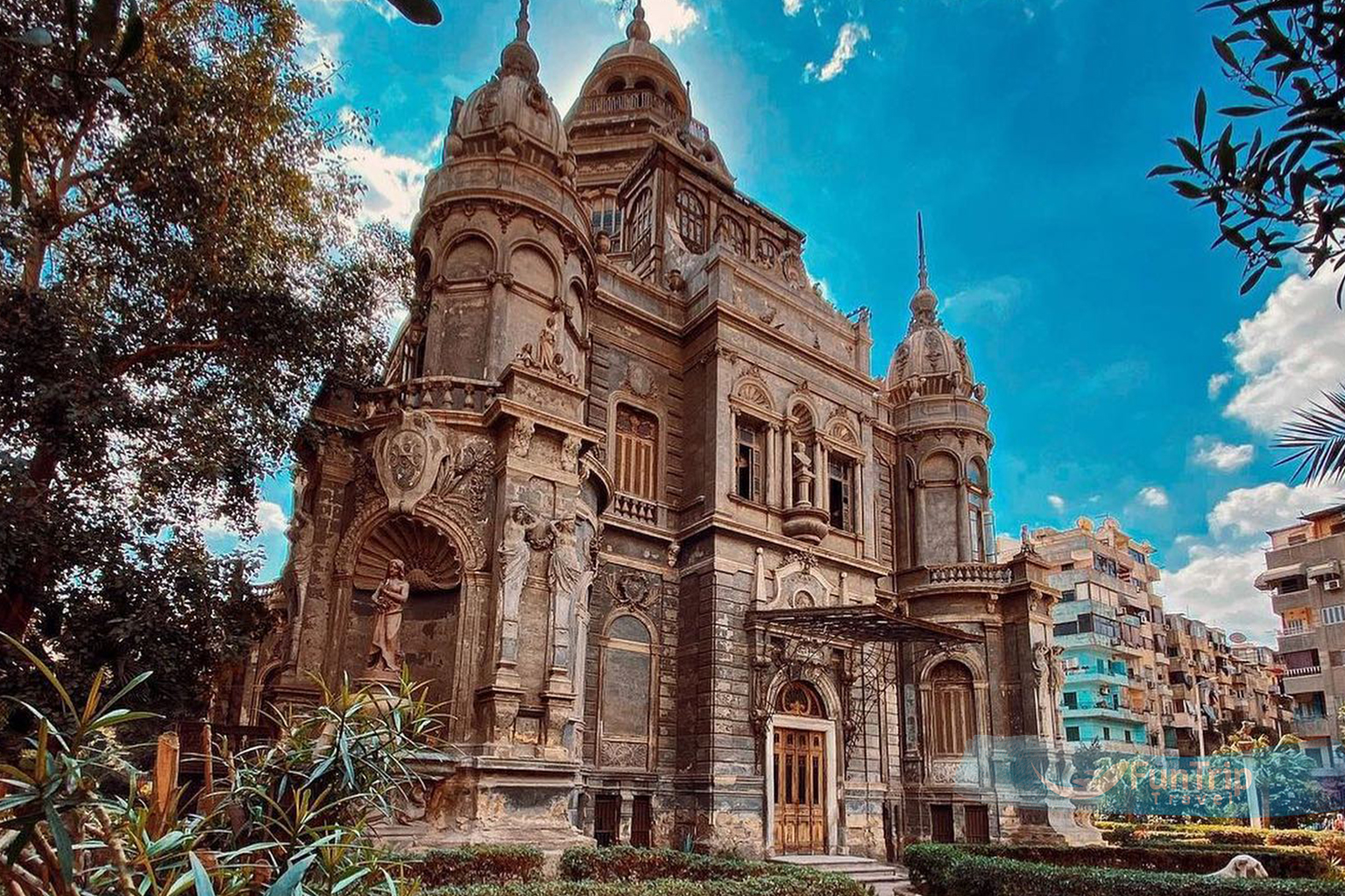
The petrified forest
The Petrified Forest Reserve is around 18 kilometres distant from Cairo. The forest comprises 7 kilometres of land and was designated a natural reserve in 1989. It is a prominent tourist attraction and a must-see location for any Egyptian adventurer. The Petrified Forest on the way to Ain El Sokhna is regarded as a rare geological monument, unequalled in terms of size and variety of petrified wood. The forest is tightly packed with petrified stems and tree trunks that grow from the ground within the wood mountain formation, making it a unique location unlike any other on Earth. The limbs of the giant petrified trees in the reserve resemble cylindrical bits of granite. The Petrified Forest area is a mostly flat plateau with magnificent cliffs and slopes exposed to the wind through erosion. The breathtaking Al Khasab Mountain dominates much of the protected area surrounding the Petrified Forest. Al Khashab Mountain is composed of layers of sand, gravel, clay, and petrified wood. The mountain is incredibly thick, measuring 70 to 100 metres. Every spring, various parts of the Petrified Forest Reserve bloom with white daffodils. This unique flower requires a certain climate to thrive, and its extracts are employed in the production of many modern medications, including cancer treatments. Trace fossils have also been discovered around the area, which could be from species that died extinct long ago. Some of the more remarkable fossils discovered in the forest are relics of various shark species. Archaeologists and scientists have discovered shark teeth in the area, indicating that ocean may have covered the land in ancient times.
